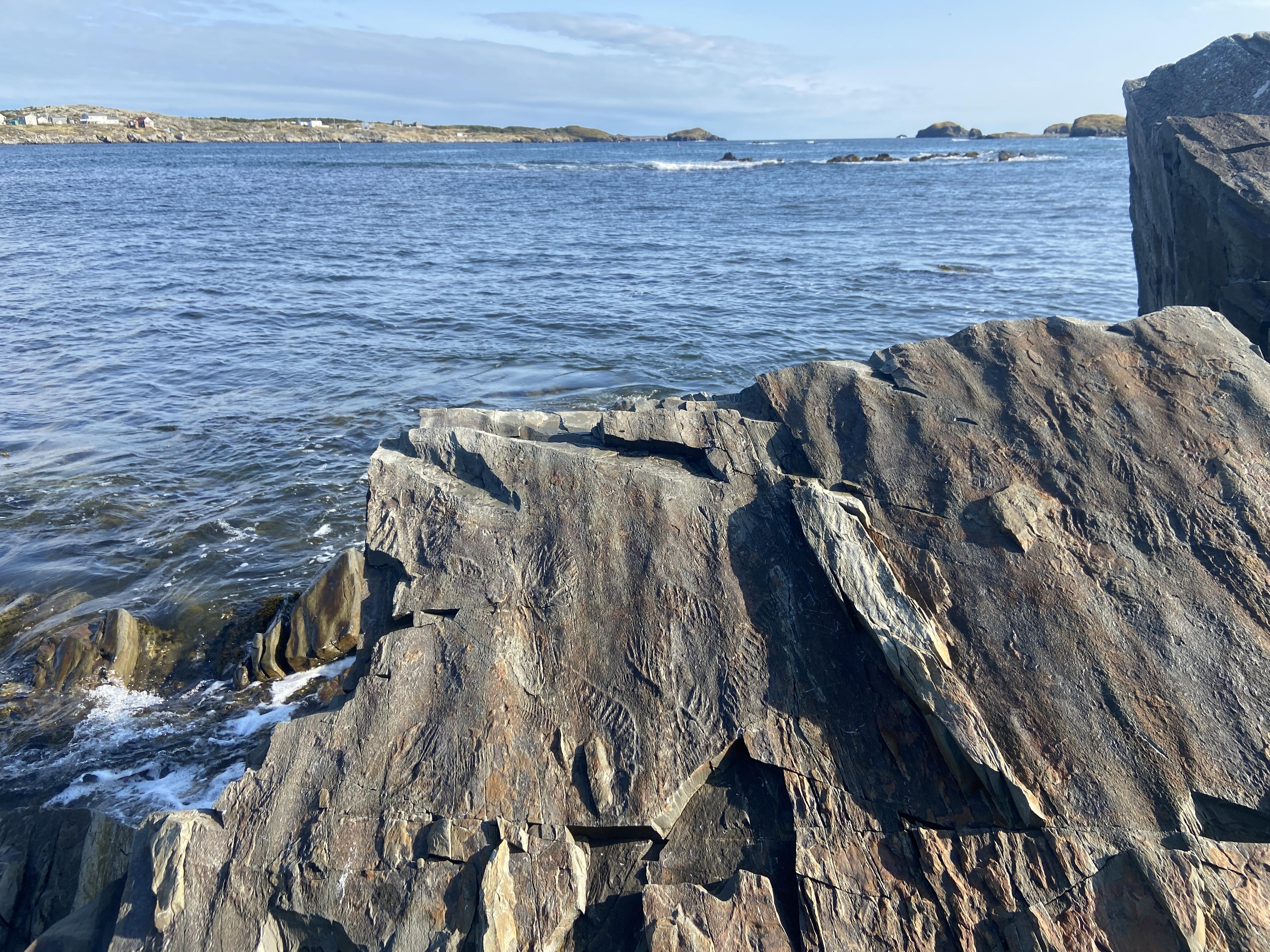
Images: Ediacaran fossils from the Discovery Geopark
Eco-evolutionary dynamics of early animals
Supervisor: Dr Emily Mitchell
Co-supervisor: Professor Andrea Manica
This project will use theoretical models of Ediacaran communities to investigate taxa life-history traits and use these traits to develop dynamic models of Ediacaran eco-evolutionary dynamics to investigate how difference processes influence Ediacaran evolution. In contrast to modern marine systems, the oldest Ediacaran benthic organisms do not interact much with each other, i.e. resource competition, facilitation and mutualisms are relatively limited. Instead, reproductive dynamics appears key to Ediacaran life. Mechanistic models can be used to investigate these different processes, with the outputs compared to the available data to determine which models best reflect observed diversity patterns, and so which processes are key.
Type of work
The student will have access to an extensive photographic and laser-scan data dataset of Ediacaran communities and use this data alongside existing analyses to document life-history traits such as reproductive modes and the strength and extent of environmental and competitive interactions within and between species within these communities. They will use this information to parameterise different types of models, and explore how changing different variables, such as the proportion of sexual to asexual reproduction, or the extent of resource competition, impacts speciation rates. The impact of these different processes on the origins of evolutionary innovations throughout the Ediacaran can also be explored.
Importance of the area of research concerned
Life has existed on Earth for more than 3.5 billion years, but it is only around 600 million years ago, during the Ediacaran time period (635 – 541 Ma), that animals appear in the rock record. It is during the Ediacaran animals evolved some of their most important traits: most obviously large body-size but also tissue-differentiation, mobility, bilateral symmetry and ecosystem engineering (reef-building). Over the last ten years, mathematical ecological approaches have demonstrated how previously elusive biological details can be extracted from the Ediacaran fossil record. This proposal will tap into the exceptionally rich biological information captured in the Ediacaran fossil record and use using mathematical models to investigate the underlying processes that drive the evolution of early animals.
References
Mitchell, E. G., Kenchington, C. G., Liu, A. G., Matthews, J. J., & Butterfield, N. J. (2015). Reconstructing the reproductive mode of an Ediacaran macro-organism. Nature, 524(7565), 343.
Mitchell, E. G., Harris, S., Kenchington, C. G., Vixseboxse, P., Roberts, L., Clark, C., ... & Wilby, P. R. (2019). The importance of neutral over niche processes in structuring Ediacaran early animal communities. Ecology Letters 22(12) 2028-2038.
Eden, R., Manica, A. and Mitchell, E.G., 2022. Metacommunity analyses show an increase in ecological specialisation throughout the Ediacaran period. PLoS Biology, 20(5), p.e3001289.
Stephenson, N.P., Delahooke, K.M., Barnes, N., Rideout, B.W., Kenchington, C.G., Manica, A. and Mitchell, E.G., 2024. Morphology shapes community dynamics in early animal ecosystems. Nature Ecology & Evolution,.1-10.
